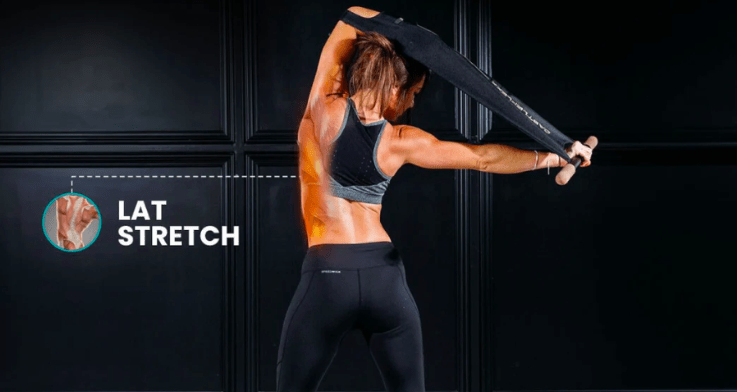The human body is an intricate and dynamic system. Like any mechanism, it requires regular maintenance to function optimally. One crucial component of this upkeep is stretching. While stretching has been practiced for millennia, only recently have we begun to understand its scientific underpinnings. More importantly, can it genuinely provide relief from a common ailment like back pain?
The Anatomy of Stretching
When we stretch, we are essentially putting our muscles under tension, causing them to elongate. This elongation increases the muscle’s flexibility and range of motion. At a cellular level, stretching facilitates an influx of blood, oxygen, and nutrients, promoting muscle health and healing.
One of the significant misconceptions about stretching is that it’s just for athletes or those engaged in physical activities like pickleball. While stretching can indeed prevent injuries in sports, its benefits extend far beyond the realm of athletics.
How Stretching Impacts Back Pain
Back pain is often the result of muscle tightness, imbalances, or injury. Prolonged sitting, poor posture, and even stress can lead to tension in the back muscles. Over time, this tension can cause pain or exacerbate existing pain.
Stretching works to alleviate back pain in several ways:
- Increasing Flexibility: Stretching regularly increases the flexibility of the back muscles. Greater flexibility means the muscles are less likely to strain or tear under tension.
- Enhancing Blood Flow: As mentioned earlier, stretching promotes blood circulation. Increased blood flow means faster recovery from muscle soreness and reduced inflammation.
- Posture Correction: Many of us have poor posture due to our sedentary lifestyles. Stretching can help realign the spine and improve posture, thus reducing the strain on back muscles.
A study published in the Archives of Physical Medicine and Rehabilitation found that individuals with chronic lower back pain who engaged in stretching exercises experienced less pain and improved functionality. So, there’s scientific evidence to back up the anecdotal claims!
For instance, products like those offered by CastleFlexx are designed to aid in stretching and improving flexibility. Such equipment is especially beneficial for individuals with limited mobility or those recovering from injuries.
Stretching: Beyond Just Back Pain Relief
While the focus thus far has been on the benefits of stretching for alleviating back pain, it’s essential to recognize that the advantages of this practice extend to other aspects of physical and mental well-being.
Stretching and Joint Health
Our joints are crucial pivot points where two bones meet, facilitating movement. Over time, due to factors like age, sedentary lifestyles, or injuries, the range of motion in our joints can diminish. This limited mobility can lead to joint pain and stiffness, particularly in weight-bearing joints like the knees and hips. Hip pain, for instance, can be debilitating, affecting our ability to walk, run, or even sit comfortably.
Regular stretching can counteract these effects by maintaining or even improving the range of motion in joints. By elongating the muscles and tendons surrounding the joints, stretching reduces the pressure exerted on them, leading to reduced pain and increased mobility.
Mental Benefits of Stretching
Often overlooked are the psychological benefits of stretching. Engaging in this activity can have profound effects on mental health:
- Stress Reduction: Stretching helps in relieving muscle tension, which is often a physical manifestation of stress. As the muscles relax, there’s a corresponding reduction in stress levels. Additionally, focusing on the act of stretching can serve as a form of mindfulness, pulling one away from daily stresses and grounding them in the present moment.
- Improved Sleep: Incorporating stretching into your nightly routine can promote better sleep. The relaxation it brings can make it easier to fall asleep and stay asleep.
- Enhanced Mood: Stretching promotes the release of endorphins, the body’s natural mood elevators. This can lead to feelings of euphoria and general well-being.
The Age Factor in Flexibility
It’s no secret that as we age, our bodies undergo various changes, and loss of flexibility is one of them. However, this decline isn’t just a result of the aging process alone. Sedentary lifestyles, lack of exercise, and not prioritizing stretching contribute significantly.
Understanding the impact of age on flexibility is essential, but it’s equally crucial to know that it’s never too late to start. Even in older adults, regular stretching can lead to improvements in flexibility, balance, and overall mobility, reducing the risk of falls and injuries.
Stretching’s Role in Recovery
Whether you’ve suffered from pickleball injuries, shin splints, or any other muscle-related ailment, stretching can play a vital role in recovery. By promoting blood flow to the injured area, stretching can speed up the healing process. However, it’s crucial to approach stretching with caution during recovery. Over-stretching or not using the correct techniques can exacerbate the injury. Consulting a physical therapist is highly recommended in such scenarios.
Incorporating Stretching Into Your Routine
To reap the benefits of stretching for back pain, consistency is key. It’s not enough to stretch once in a blue moon; it should be a part of your daily routine.
Here are some tips:
- Start Slow: If you’re new to stretching, begin with just a few minutes a day. Gradually increase the duration as your flexibility improves.
- Use Tools: Incorporating body stretching equipment or flexibility equipment can help deepen your stretches and provide better results.
- Stay Hydrated: Drinking water helps keep the muscles elastic, making stretching more effective.
- Seek Guidance: If you’re unsure about the correct techniques, consult a physical therapist or a qualified instructor.
The Role of Equipment in Stretching
Modern advancements have given us tools that can enhance our stretching routines. Using the best stretching equipment not only intensifies the stretch but also ensures that the right muscles are targeted.
Conclusion
Stretching is more than just a warm-up or cool-down activity; it’s a therapeutic tool that can significantly alleviate back pain. As with any exercise regimen, it’s essential to approach stretching with knowledge, consistency, and the right equipment.
Remember, while stretching can offer relief from back pain, it’s crucial to consult a healthcare professional if you’re experiencing persistent or severe pain. They can provide a comprehensive diagnosis and guide you on the best treatment approach.
So, the next time you feel that familiar twinge in your back, don’t just reach for the painkillers. Instead, give stretching a try. The science supports it!
🤔 Have you ever experienced the magic of stretching for back pain relief? 🌟 Share your favorite stretches with us – let’s create a stretching community that’s got your back! 💪

